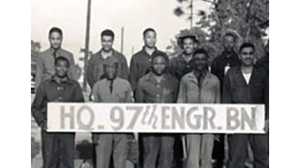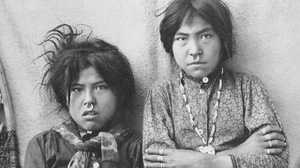Alaska in the 1940s

Before the United States entered World War II, few Americans would have suspected that the territory of Alaska would play a role in America's fight against the Axis powers.
Wilderness
In 1940, Alaska was still a largely uncharted wilderness viewed by the rest of the country as best left to adventurous trappers and miners. The main means of transport from Alaska to the continental United States were by air and sea. Those who did venture to the territory relied on local trappers and bush pilots as guides. Without a direct road, Alaska was treated like an island. Within Alaska, two railroads, the White Pass and Yukon Railroad and the Alaska Railroad, provided the sole, short-reaching modes of mechanized travel by land. The most important form of local transportation was the riverboat. Boats connected far-flung towns and were essential to local trade.
Small Population
In 1940 only 72,524 people lived in Alaska, a territory one-fifth the geographical size of the continental United States. Roughly half of Alaska's population was comprised of white settlers who had migrated to the territory during gold rushes in the latter half of the nineteenth century. The other half of the population was divided among Native Alaskans.
Miners
Most of the white inhabitants of Alaska were trappers or miners. Since 1867, when the United States purchased the colony of Alaska from Russia, fortune-seekers had migrated to the territory, mostly settling around its southern panhandle. Beginning with the 1896 gold strike along the Klondike River in Yukon Territory and continuing through World War I, gold prospectors had emigrated to the area and increasingly settled in the interior, creating cities near gold strikes, including Nome and Fairbanks.
Fishers and Trappers
In addition to the mining industry, settlers were reaping the benefits of many of Alaska's other plentiful natural resources. Fishing and trapping were two major commercial activities that thrived in Alaska, although the highly aggressive extractive fishing practices threatened the natural ecosystem.
Few Amenities
Despite the influx of settlers, in 1940 Alaska remained somewhat of a wilderness. Roads were not paved and were mostly mud. Outhouses were in common use. Local inhabitants did not have running water or a sewer system until American soldiers built them during their work on the Alaska Highway in 1942.
Few Defenses
Although the United States had purchased Alaska from Russia in 1867, the military had set up few defenses. The military base in the territory's most vulnerable spot, the Aleutian Islands, contained only six operational airplanes and a small radio station run by the United States Army Signal Corps.
Impact of the War
Following the December 1941 attack at Pearl Harbor, many Americans came to realize that Alaska was the closest point in North America to Japan. Within a matter of months, the territory and nearby Canadian towns were inundated with thousands of troops and tons of equipment and supplies. In addition to fortifying the northwest, the military shipped hundreds of planes through Alaska to Russia in a lend-lease agreement for use against Germany in Europe. By 1943, the number of military personnel had grown to 124,000, and by 1950, Alaska's permanent population had increased to 128,643 people.







